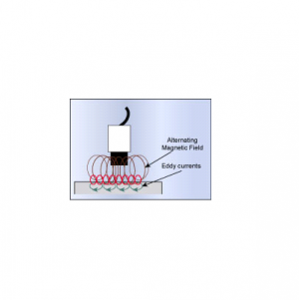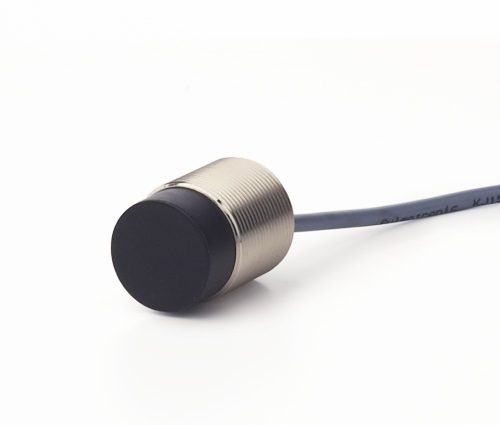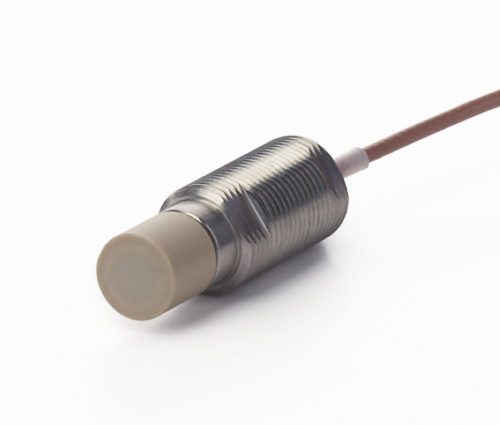- Have any questions?
- +61 3 9837 5203
- sales@slentech.com.au
Eddy Current Sensors
Eddy Current Sensors operate with magnetic fields. The driver creates an alternating current in the sensing coil in the end of the probe. This creates an alternating magnetic field with induces small currents in the target material; these currents are called eddy currents. The eddy currents create an opposing magnetic field which resists the field being generated by the probe coil. The interaction of the magnetic fields is dependent on the distance between the probe and the target. As the distance changes, the electronics sense the change in the field interaction and produce a voltage output which is proportional to the change in distance between the probe and target. The target surface must be at least three times larger than the probe diameter for normal, calibrated operation; otherwise, special calibration may be required.

The continuously measuring Eddy Current Sensors are intended for analog determination of distance and/or position of electrically conductive objects. The contact-free measuring principle is not sensitive to contamination from non-conductive media and is especially well-suited for use in harsh industrial environments.
Special electronics (eddy current converter) converts the sensor values altered by the object being measured into an analog output signal proportional to the distance of the object (e.g. 0…10 V or 4…20 mA) with high precision results. Our Eddy Current sensors are the ones with active temperature compensation and field calibration capabilities to ensure optimum signal stability, extreme reliability and accuracy to carry out measurement over large temperature ranges (-50℃ to +235℃).


